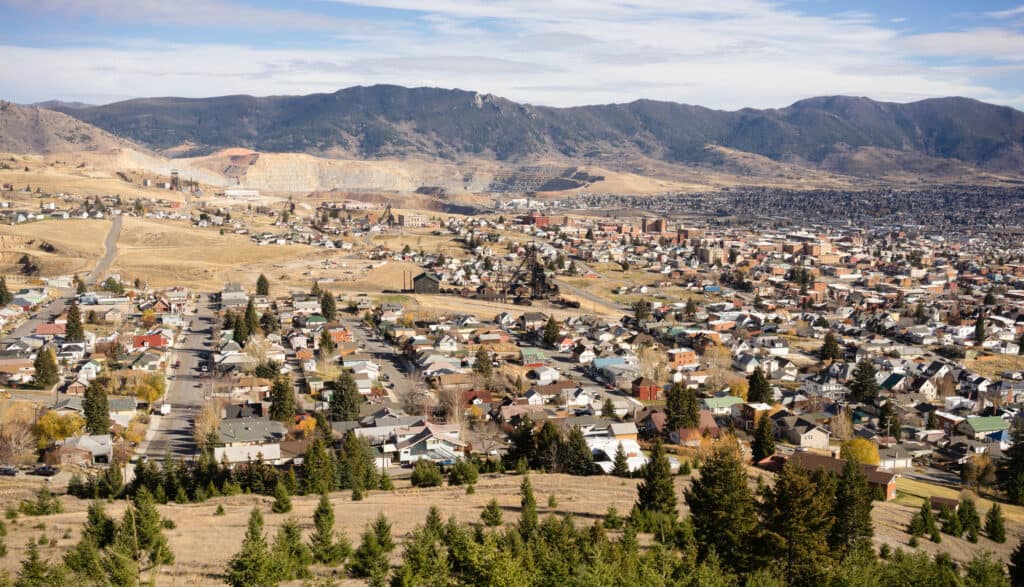Montana has fleeting but beautiful summers that bring warmth to the state along with the risk of wildfires. Montanans are used to the barely-there warm weather and know how to make the best of their blistery winter season. They can enjoy a white Christmas in December and settle in for the coldest month of the new year, January, when temperatures dip below zero. The weather can vary from day to day and week to week, sometimes jumping from subzero temperatures to take-a-walk-outdoors weather. Residents know to embrace the unpredictability. Montana certainly has cold winter seasons, and the volatility is a reality, but there have still been some surprisingly warm days during the winter season over the last several years. Now, how did this winter compare to Montana’s warmest ever? Let’s find out!
The Warmest Winter Ever Recorded in Montana’s History

While Montana is generally quite cold during the winter, in 2015, the average temperature in the state for the entire year was just under 45°F. That temperature persisted that winter.
©iStock.com/ChrisBoswell
Montanans know to brace themselves for winter months when the weather gets beyond icy and where the record for the coldest winter was set at Rogers Pass in 1954. Snow had fallen for nearly a week in the area and it was packed down nicely, reaching an incredible 66 inches. The night was clear without any wind, making it ideal for the extreme recording. Because of this event especially, Montana became known for its frigid winters, and understandably, its rather scarce population.
Warmth is of course a relative concept as Montanans know — what’s t-shirt weather for them may require full winter clothes for someone from a warmer climate. In 2015, Montana tied a record for the warmest year in 84 years. On average, the temperature was a cool and comfortable 44.9°F throughout the entire year, winter included. While it was perhaps a bit of a relief for some residents, the warmer trend didn’t arrive without severe consequences. Wildfire season was worse than ever with limited snowpack, which then affected the summer drought.
In 2021, Montana experienced another record-breaking winter season as a heatwave moved through several states, including Washington, Wyoming, and North Dakota. Meteorological winter had already begun yet many Americans were still experiencing unusually balmy weather. The city of Jordan reached an almost inconceivable temperature of 78°F that December tying with Buffalo in Wyoming. Unfortunately for the prairies of Montana, this meant the spread of wildfires which damaged farming equipment and dozens of residences. Researchers have found that across 38 states, winter is the fastest-warming season.
Average Highs and Lows This Year

The coldest day during this current winter in Montana was on December 22nd, when temperatures dropped to -35°F.
©Galyna Andrushko/Shutterstock.com
Montana usually enjoys clear, warm summer months that some may say are a bit too short. During the winter season, the weather dips low to freezing and subzero temperatures throughout the state with plenty of snow and partly cloudy skies. Usually, in Helena, the state’s capital, temperatures stay between 13°F and 86°F throughout the year, rarely dipping below -6°F or going above 95°F. This winter, December saw the coldest day on the 22nd when the recorded low was a bone-chilling -35°F. The highest temperature recorded this same month reached 53°F on the 27th. Talk about variable temps! Aside from a few cold fronts, the rest of the temperature this winter in Helena remained between 10°F and 50°F.
West Yellowstone is among the coldest parts of the state, where the temperature usually varies between 7°F and 77°F throughout the year, rarely dipping below -10°F or going past 84°F. During the winter months, there were two instances when temperatures plunged well below zero. The first was on December 22nd, where the recorded low reached -36°F, just one degree colder than that same day in Helena. The warmest day was on the 26th when temperatures were just above freezing at 34°F. On January 30th, however, West Yellowstone temperatures got even colder, tumbling all the way down to -42°F. Temperatures varied throughout the winter season but didn’t even make it into the 40s this year.
Animal Migration in Montana

Montana’s mule deer prefer the southeast portion of the state during the winter.
©Kirk Geisler/Shutterstock.com
In Montana, the high elevation mountains provide wildlife with tons of food but when winter rolls around, that food becomes scarce. Something similar happens in the low-elevation regions when winter provides a mild climate but becomes much too dry and inhospitable during the summer months. While some wildlife call Montana home year-round, others migrate to find better places to spend when the weather gets too extreme.
Mule deer, for instance, are resident animals, hanging out across the span of two square miles every year in southeast Montana. Migrating species include birds like snow geese and swans, which stop by the Freezeout Lake Wildlife Management Area during spring to rest and feed as they make their long, strenuous journeys each year. In the North Shore Wildlife Management Area, migrating fowl rest and feed, stopping by to enjoy the 427-acre space where more than 229 bird species find refuge.
The photo featured at the top of this post is © Emily Kerns/Shutterstock.com
Thank you for reading! Have some feedback for us? Contact the AZ Animals editorial team.







